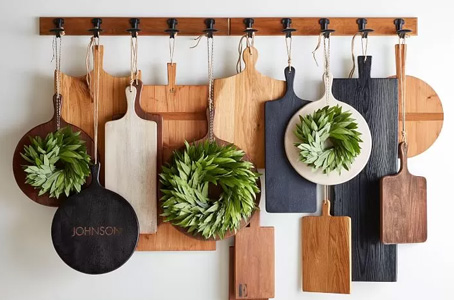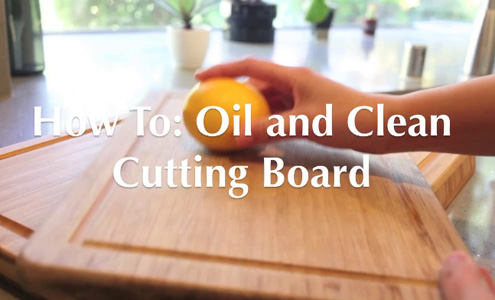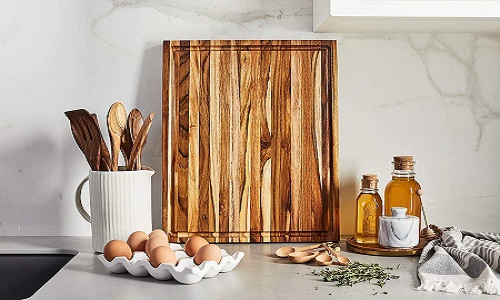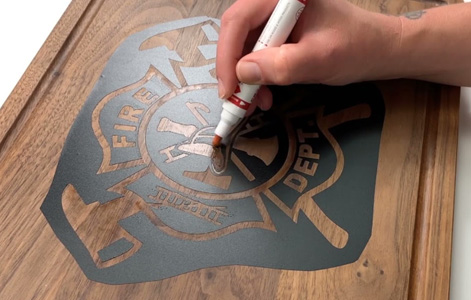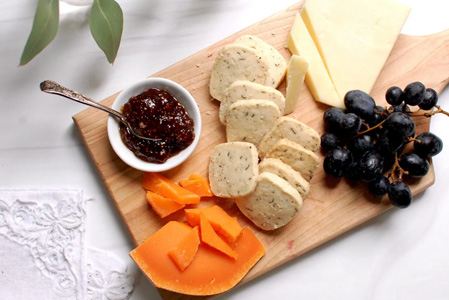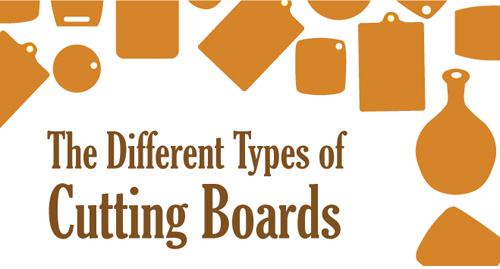Can You Put Cutting Board In Oven? Expert Opinion
Cutting boards are essential kitchen tools that serve as a protective surface for your countertops while you prepare meals. While they are primarily used for chopping, slicing, and dicing ingredients, you might wonder whether it’s safe to put them in the oven. This article will explore various types of cutting boards and discuss their oven compatibility.
However, Can You Put Cutting Board In Oven? Is it the right thing to do?
Understanding Cutting Boards
Before we delve into the topic, it’s essential to understand the different types of cutting boards available in the market. There are various materials used to make cutting boards, including wood, plastic, silicone, and glass.
Types of Cutting Boards
- Wooden Cutting Boards: Renowned for their durability and natural beauty, wooden cutting boards are a popular choice in many kitchens.
- Plastic Cutting Boards: Lightweight, easy to clean, and available in various colors, plastic cutting boards are widely used in both home and commercial kitchens.
- Silicone Cutting Boards: These flexible and heat-resistant cutting boards are gaining popularity due to their versatility and non-slip properties.
- Glass Cutting Boards: Sleek and hygienic, glass cutting boards are an attractive option for many homeowners.
Heat Resistance of Different Materials
The ability of a cutting board to withstand heat varies depending on its material. This characteristic is crucial to consider when contemplating oven use.
Can You Put Cutting Board In Oven?
It depends on the material of your cutting board. Some cutting boards are safe to put in the oven, while others are not.
If you have a wooden cutting board, it is generally not recommended to put it in the oven as the heat can cause the wood to warp or crack. It is best to use a separate oven-safe dish or baking sheet for any items that need to be heated in the oven.
On the other hand, if you have a cutting board made of heat-resistant materials such as silicone or certain types of plastic, it may be safe to put it in the oven at low temperatures. However, it is always important to check the manufacturer’s instructions and guidelines for your specific cutting board before exposing it to heat.
To ensure the longevity and safety of your cutting board, it’s best to follow the care instructions provided by the manufacturer and avoid exposing it to high temperatures unless explicitly stated that it is safe for oven use.
Can You Put a Wooden Cutting Board in the Oven?
Wooden cutting boards are not suitable for direct oven use. The high temperatures in an oven can cause the wood to dry out, crack, and warp. Moreover, the glues and finishes used in some wooden cutting boards may not be oven-safe, potentially releasing harmful chemicals when exposed to heat.
Risks and Considerations
Placing a wooden cutting board in the oven poses several risks:
- Fire Hazard: The wood can ignite if exposed to direct heat or placed near the heating element.
- Damage to the Board: The high temperature can lead to irreparable damage to the cutting board.
- Release of Toxins: Some wooden cutting boards may contain adhesives or finishes that can release toxic fumes when heated.
To preserve your wooden cutting boards, it’s best to avoid using them in the oven.
Can You Put Plastic Cutting Boards in the Oven?
Plastic cutting boards are more heat-resistant than wooden ones, but they still have limitations when it comes to oven use.
Pros and Cons
Pros of using plastic cutting boards in the oven:
- Heat Resistance: Plastic boards can generally withstand low to moderate oven temperatures.
- Easy to Clean: Plastic cutting boards are dishwasher-safe, making them easy to maintain.
- Affordability: They are often budget-friendly.
Cons of using plastic cutting boards in the oven:
- Warpage: Exposing plastic cutting boards to high temperatures can cause them to warp or melt.
- Potential Release of Chemicals: Some plastics may release harmful chemicals when heated.
While plastic cutting boards can handle mild oven use, it’s best to avoid subjecting them to high temperatures.
Can You Put Silicone Cutting Boards in The Oven?
Silicone cutting boards are known for their flexibility and heat resistance.
Benefits and Precautions
Benefits of using silicone cutting boards in the oven:
- Heat Resistance: Silicone cutting boards can tolerate high temperatures without melting or warping.
- Non-Slip Surface: The grippy surface prevents ingredients from sliding during cutting.
- Easy Storage: Many silicone cutting boards are flexible and can be easily rolled up for storage.
Precautions when using silicone cutting boards in the oven:
- Avoid Direct Flames: While silicone is heat-resistant, direct exposure to flames can cause damage.
- Use Oven Mitts: The board can become hot after oven use, so handle it with oven mitts.
Silicone cutting boards are a reliable option for oven use due to their impressive heat resistance.
Can You Put Glass Cutting Boards in The Oven?
Glass cutting boards are unique in appearance and may tempt you to use them in the oven, but there are some considerations to keep in mind.
Advantages and Limitations
Advantages of using glass cutting boards in the oven:
- Heat Resistance: Glass can tolerate high oven temperatures without damage.
- Hygienic Surface: Glass is non-porous and easy to clean, making it a hygienic option.
Limitations of using glass cutting boards in the oven:
- Weight: Glass cutting boards can be heavy and may not fit well in some ovens.
- Risk of Breaking: Glass cutting boards are more susceptible to breaking or cracking under impact.
If you choose to use a glass cutting board in the oven, ensure it fits securely and doesn’t come into direct contact with the oven’s heating element.
Tips for Using Cutting Boards in the Oven
If you’re confident that your cutting board can handle oven use, follow these tips to ensure safety and longevity:
- Preheat the Oven: Preheat the oven to the desired temperature before placing the cutting board inside.
- Positioning: Place the cutting board on the oven rack rather than directly on the heating element.
- Temperature Limits: Stay within the heat resistance limits of the cutting board material.
- Avoid Sudden Temperature Changes: Allow the cutting board to cool before washing it after oven use to prevent warping.
- Regular Maintenance: Clean and oil wooden cutting boards regularly to keep them in good condition.
Conclusion
In conclusion, while some cutting boards can withstand oven use, it’s essential to consider the material and its heat resistance properties. Wooden cutting boards should be strictly avoided in the oven, while plastic cutting boards can handle mild oven use. Silicone and glass cutting boards are the best options for oven use due to their impressive heat resistance. Always prioritize safety and follow the manufacturer’s guidelines when using cutting boards in the oven.
FAQs
- Can I use my regular cutting board in the oven? Regular cutting boards made from wood or plastic are not suitable for oven use due to their low heat resistance.
- Are all silicone cutting boards oven-safe? While silicone cutting boards are generally oven-safe, it’s crucial to check the manufacturer’s recommendations.
- Can glass cutting boards shatter in the oven? Glass cutting boards are designed to withstand high temperatures, but they are not indestructible. Avoid exposing them to sudden temperature changes.
- What is the best material for oven-safe cutting boards? Silicone and glass cutting boards offer the best heat resistance and are safe for use in the oven.
- How do I clean a cutting board after using it in the oven? Allow the cutting board to cool before washing it with

